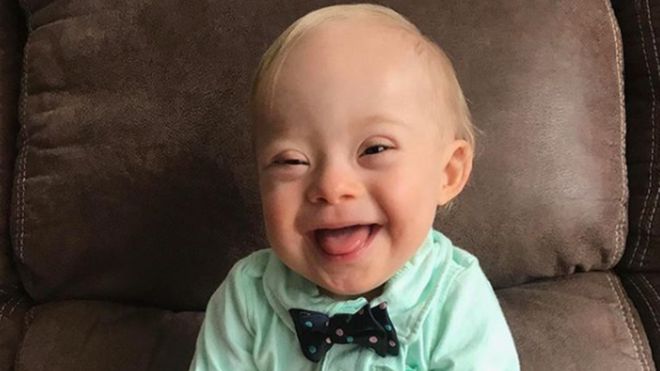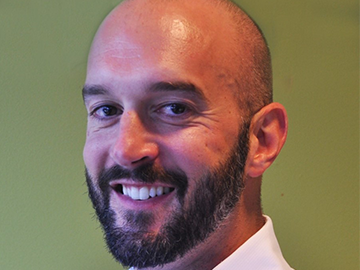Positive news is the new fake news, and brands need to take advantage
From asteroids to nuclear war, Earth can at times seem a dire place to live. In response, the thirst for positive news is one brands need to take advantage of, argues Ogilvy PR CEO Richard Brett.
If news is the first draft of history, what will it tell us about the last few years?
There’s the threat of climate change, tension in the Middle East and potential nuclear war on the Korean peninsula. We’re surrounded by populism, terrorism and unbridled capitalism. Donald Trump, Harvey Weinstein and Brexit are casting long shadows. As of last month, there’s even a chance we’ll be hit by an asteroid.

Asteroid Bennu could collide with Earth in 2135
The world has, quite frankly, gone to shit. Well at least it seems that way.
As if all this bad news wasn’t enough, we also must wade through the rising tide of fake news – amusingly dangerous tweets from The Donald, outrageous claims made by Brexit supporters and the worrying rise of the alt-right in Europe.
This is even changing our perception of truth. Instead of an absolute measure, we now have what Stephen Colbert calls ‘truthiness’ – where things that ‘feel right’ are more important than facts.
If you chose to believe that the moon landing was a hoax, it’s easy to find plenty of people willing to agree with you. You can cherry-pick stories that reflect your views and have them reaffirmed in the social media echo chamber. In effect, you can choose your own truth.
American futurist Ray Kurzweil says we’re preconditioned to seek out bad news as part of a survival mechanism from when we were hunter gathers – that we’re hardwired to find potential threats before they harm us. It’s helpful if you’re in the wild avoiding tigers and poisonous snakes, but less so when trying to get through your workday without having an existential crisis.
Things aren’t really that bad
Did you know that the US economy has grown by 80 percent since 1992? That global poverty has halved in the past 20 years? Or that 2016 was the safest year in human history?
That’s right – you’ve been living a charmed life, less likely to be killed by warfare, violence or terrorism than any other year in human history. And you didn’t even know it.
But increasingly, this is the kind of information people are looking for. If 2017 was the year of fake news, then 2018 will be the year of happy news. We want to feel positive, to see the bigger picture, to know what’s going on.
Searches for ‘good news’ have gone up by 45 per cent in recent years. The Guardian recently launched ‘The Upside’ a dedicated space for good – but informative – news on its website. Just last week, Bill Gates guest edited TIME magazine on the theme of optimism. His point? The world is getting better if you stop to look at it.
What does this mean for us?
For those of us in advertising and marketing, this opens a huge opportunity to be part of a meaningful zeitgeist – to make people happy. If we want to grab attention in a fast-moving, over-communicated world, there are five types of work that will connect with today’s need for a positive spin:
We need to create moments of joy by creating experiences, stories or thought leadership around optimism. A good example is Dulux, which has started a global program to change grey spaces into playful, colourful environments. To date, the brand has donated 675,000 litres of paint to cities across China, South American, Europe and Africa.
Resolving sadness
The emotive side of our brains drive more than 80 per cent of purchase decisions. A fantastic example of using emotion to drive a marketing message is John Lewis’ infamous Monty the Penguin Christmas ad. Research agency System1 found the ad was so successful because the audience felt so resolved by the conclusion. The lesson is that powerful, emotive storytelling is important for brands, but it’s even better to resolve sadness with a happy ending.
In our fast, mobile world, people are catching a breath to celebrate the real, ordinary stories of small achievement. Gillette’s Gold Lion winning Handle with Care campaign is a great example. It showcases the inspirational, but very ordinary life of a man who is the full-time carer for his father. Showing the happiness in the everyday can be a powerful tool.
People are looking for brands to be more proactive about doing some good in the world. Whirlpool’s Care Counts campaign comes from the insight that attendance at school increases when you have clean clothes – so it installed washers and dryers within at-risk schools across America. The result was an improvement in school attendance for kids and huge brand affinity for Whirlpool.
The internet means it’s never been so easy to spread an idea or find diversity. This has resulted in a new trend of celebrating choice, difference and inclusion, and it’s dictating what consumers want from brands as well. An example of this in action is baby product company Gerber, which, in looking for a replacement for its original ‘Gerber Baby’ from the 1920s, chose 18 month old Lucas, who has Down syndrome, to represent its brand.

Lucas, the latest Gerber Baby
There’s an incredible opportunity to tell beautiful stories, create uplifting experiences and solve real, community problems – all in the name of spreading some extra happiness around the world. But this must be grounded in authenticity. Your brand must practice what it preaches or be prepared for swift consumer backlash.

Richard Brett is CEO, Ogilvy Public Relations.




Wonderful article*, Richard – so important to remember how brands can be champions of good in so many ways. We need to see and feel more of it, to counter the barrage of negativity that comes from the media (including social media).
*Fortunatelty, the last two thirds redeemed the irony of the first, where your derision of the Trump and Brexit phenomena showed no real understanding of the situations, and reference to Stephen “I’m a comedian, so I’m totally not delivering fake news political propaganda” Colbert made that even more obvious. I have little concern for the fake news of clickbaity blog sites, but we should all have concerns about the mainstream media’s propagandising, which is becoming increasingly more blatant. If you hadn’t noticed, the ‘threat of nuclear war on the Korean Peninsula’ is nearly a thing of the past, courtesy of the ‘dangerous tweets from The Donald’ that you mock only sentences later. Then you talk about how the economy in the US has grown so much since 1992, but miss that it’s smashed all targets since Trump took office (actual CNN headline: ‘Trump thinks he can get 3% growth next quarter – here’s why he’s dreaming’. Actual result exceeded 3% and has done every quarter since).
Perhaps you could be the change you want to see in the world? Take a moment to understand who is the real fake news, and not be so negative by casting aspersions on others whose political positions differ from your own, before leading the charge for brands to be more positive?
User ID not verified.